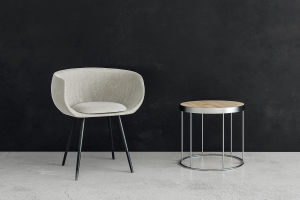Armchairs, as a timeless and classic piece of furniture, play a significant role in homes and public spaces around the world.
They are not only an ideal choice for relaxation and comfort but also play an important role in interior design.
This article will delve into the origin, design features, and functional uses of armchairs to help readers better understand the charm of this furniture.
Origin and Development
The history of armchairs dates back to ancient civilizations.
The earliest armchairs appeared in ancient Egypt and Greece, where they were typically made of wood and featured simple designs. During the medieval period, armchairs saw further development in Europe, especially in the residences of nobility, becoming a symbol of status.
By the Renaissance period, armchair designs became more elaborate and decorative. The materials and craftsmanship of the chairs continuously improved, with wood, fabric, and leather being widely used. The 19th-century Industrial Revolution brought modern manufacturing techniques, resulting in a broader range of designs and significantly lower production costs, allowing ordinary households to enjoy this comfortable furniture.
Design Features
1. Comfort: The primary characteristic of armchairs is their comfort.
Designers often consider ergonomics to ensure the chair’s backrest, seat cushion, and armrests provide good support. Modern armchairs frequently come with soft cushions and adjustable backrests to ensure users remain comfortable during prolonged use.
2. Materials: The choice of materials for armchairs is diverse. Traditional wooden armchairs are usually made from hardwoods like oak or walnut, while modern armchairs often use synthetic materials, metal frames, and high-density foam. The chair’s surface can be covered in various materials such as fabric, leather, or velvet, each offering a unique tactile and visual effect.
3. Style: Armchair designs vary widely, from classic Victorian styles to modern minimalist designs. Classic styles often emphasize detailed carving and decoration, while modern styles focus more on clean lines and functionality.
4. Functionality: Beyond basic seating, modern armchairs can feature numerous additional functions, such as rocking capabilities, massage functions, and heating elements. These features can greatly enhance the user experience based on individual needs.
Functional Uses
1. Relaxation: Armchairs are ideal for relaxation. At home, whether for reading, watching TV, or for a brief rest, an armchair provides a comfortable space. Many armchairs come with adjustable backrests and footrests, allowing users to customize their seating position.
2. Enhancing Space Aesthetics: In interior design, armchairs are not only functional but also serve as decorative elements. They can act as focal points in a room, enhancing the overall aesthetic appeal of the space. Choosing an armchair in the right style and color can complement the room’s decor.
3. Functional Applications: Some specially designed armchairs are used in medical and rehabilitation settings, such as chairs for elderly care. These chairs are often designed with additional support and assistive features to help users with daily activities.
Conclusion
As a classic piece of furniture, the armchair has a rich historical tradition and continues to showcase its unique charm in modern life.
From comfort to design aesthetics, armchairs undoubtedly play a crucial role in enhancing quality of life. Through this introduction, it is hoped that readers can better appreciate the value of armchairs and find greater satisfaction in their selection and use.


